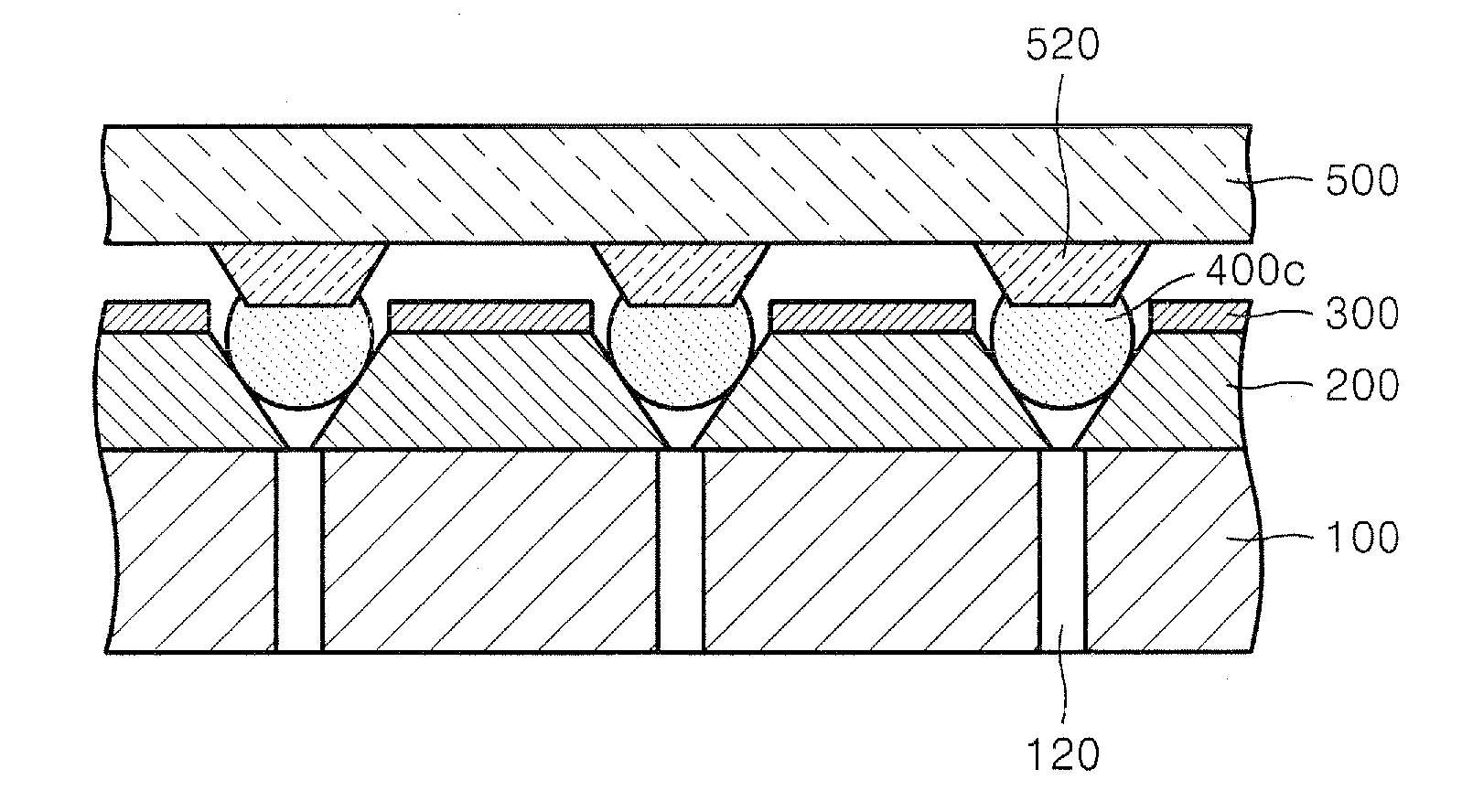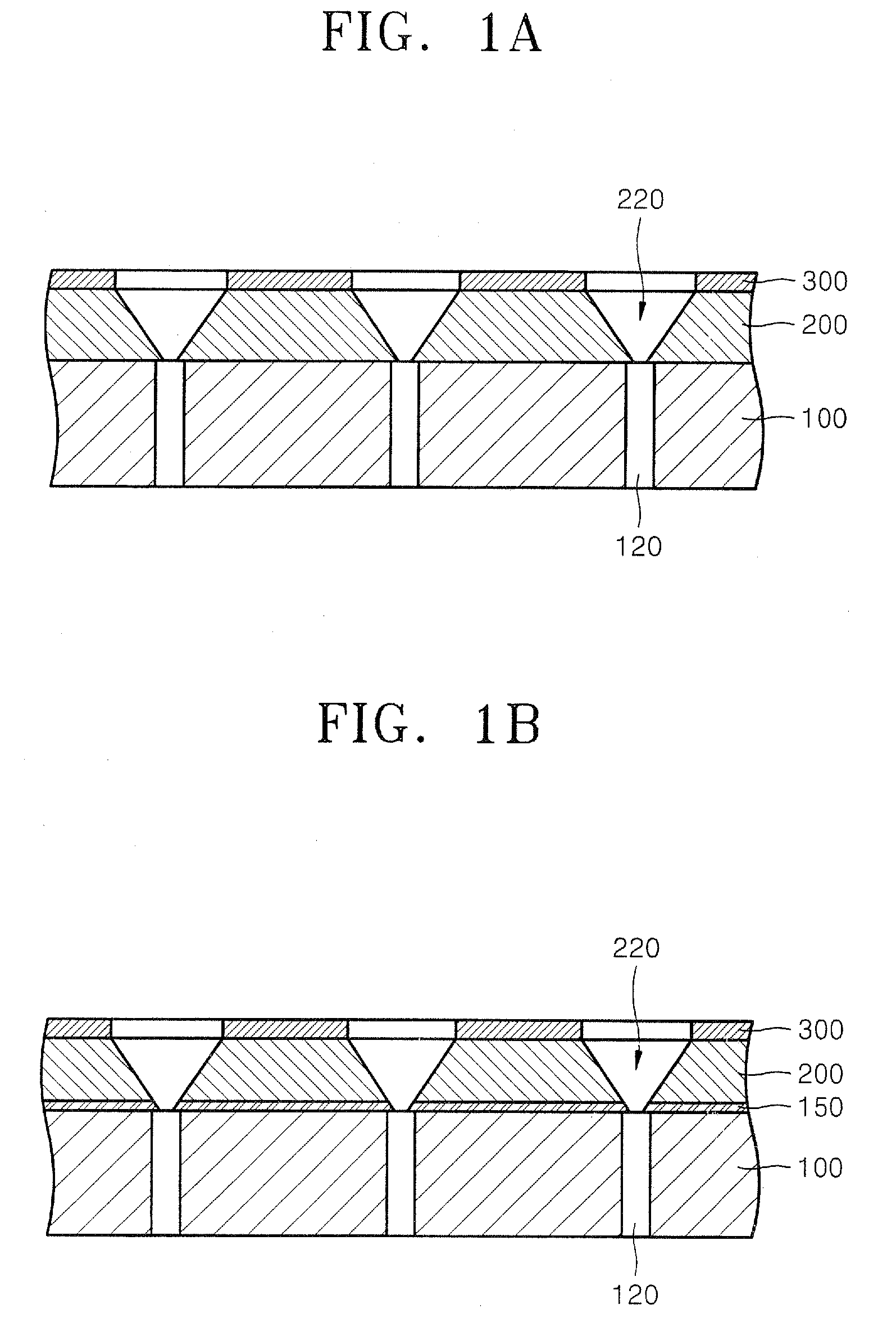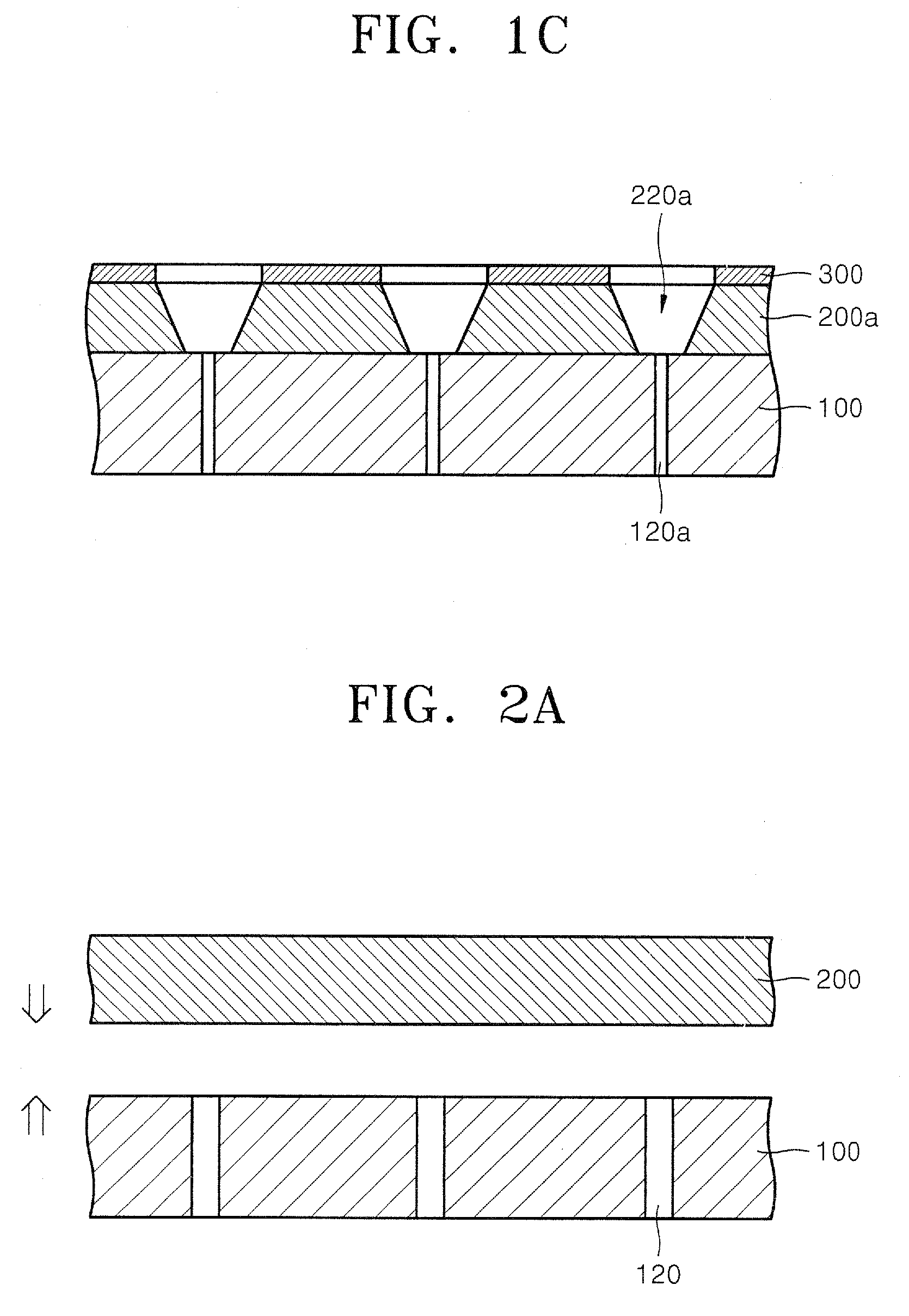Mold for forming conductive bump, method of fabricating the mold, and method of forming bump on wafer using the mold
a mold and conductive technology, applied in the field of molds for forming conductive bumps, can solve the problems of limited types of components that form solder bumps, low manufacturing speed, and large distance between bumps, and achieve the effect of high mold precision
- Summary
- Abstract
- Description
- Claims
- Application Information
AI Technical Summary
Benefits of technology
Problems solved by technology
Method used
Image
Examples
first embodiment
[0022]FIG. 1A is a cross-sectional view illustrating a mold for forming a conductive bump according to the present invention.
[0023]Referring to FIG. 1A, a mold for forming a conductive bump according to an embodiment of the present invention includes a first substrate 200 having a plurality of grooves 220, a second substrate 100 formed below the first substrate and having through-holes 120 respectively in communication with the bottoms of the grooves 220, and a mask layer 300 with a pattern on the first substrate 200. The plurality of grooves may have, for example, a substantially funnel-shape, among other shapes as discussed below.
[0024]The mold for forming a conductive bump according to an embodiment of the present invention may have a three-layered structure including the first and second substrates 200 and 100, and the mask layer 300. However, the present invention is not limited to the three-layered structure, but the mold may have a structure with a greater number of layers, i...
second embodiment
[0030]FIG. 1B is a sectional view illustrating a mold for forming a conductive bump according to the present invention.
[0031]Referring to FIG. 1B, the mold for forming a conductive bump according to the second embodiment is similar to the mold for forming a conductive bump in the embodiment of FIG. 1A, but an adhesive layer 150 is formed between a first substrate 200 and a second substrate 100 to bond the first and second substrates 200, 100. Thus, since the mold for forming a conductive bump according to this embodiment further comprises the adhesive layer 150, it has a four-layered structure unlike the embodiment of FIG. 1A. However, the mold for forming a conductive bump according to this embodiment may have a structure having a greater number of layers, if necessary.
[0032]The first substrate 200 and the second substrate 100 may be attached to each other using various bonding methods. For example, an anodic bonding method applying a high voltage at an appropriate temperature, or ...
fourth embodiment
[0058]FIG. 4 is a sectional view illustrating a mold for forming a conductive bump used in a method of forming a bump on a wafer according to the present invention.
[0059]Referring to FIG. 4, the method of forming a bump on a wafer according to an embodiment of the present invention can be accomplished using a mold without a second substrate having a through-hole. However, since vacuum adsorption cannot be used during the method, the removal of a conductive powder is preferably performed using a blade.
[0060]Meanwhile, since the shape of the groove 220 of the first substrate 200a is not limited to a funnel shape, various shapes of the groove can be used.
[0061]As described above, the mold for forming a conductive bump according to an embodiment of the present invention overcomes the problems caused in the methods of forming a bump using an electroplating process, an evaporation process, and a printing method.
[0062]Further, various shapes of a mold for forming a conductive bump can be e...
PUM
| Property | Measurement | Unit |
|---|---|---|
| thickness | aaaaa | aaaaa |
| diameter | aaaaa | aaaaa |
| diameter | aaaaa | aaaaa |
Abstract
Description
Claims
Application Information
 Login to View More
Login to View More - R&D
- Intellectual Property
- Life Sciences
- Materials
- Tech Scout
- Unparalleled Data Quality
- Higher Quality Content
- 60% Fewer Hallucinations
Browse by: Latest US Patents, China's latest patents, Technical Efficacy Thesaurus, Application Domain, Technology Topic, Popular Technical Reports.
© 2025 PatSnap. All rights reserved.Legal|Privacy policy|Modern Slavery Act Transparency Statement|Sitemap|About US| Contact US: help@patsnap.com



